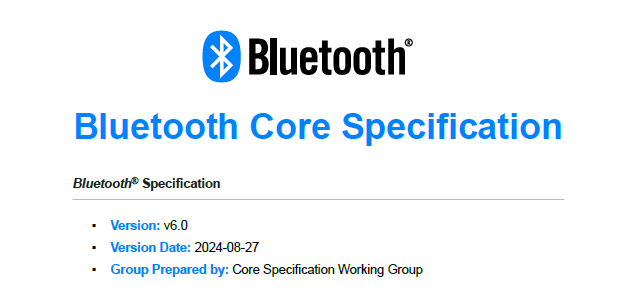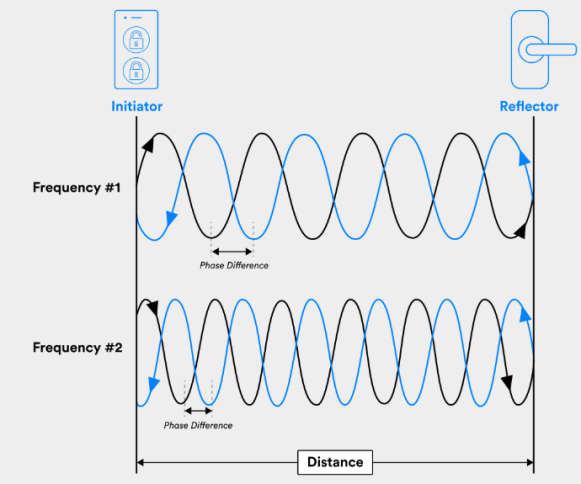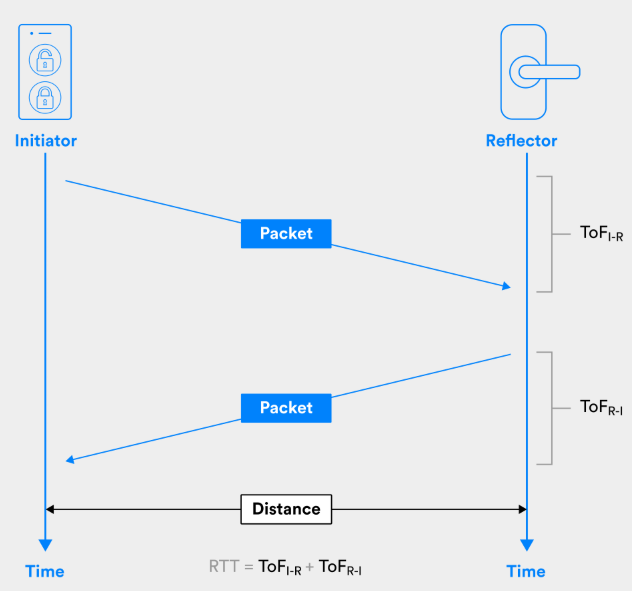I only recently learned that Bluetooth 6.0 has been released for over six months. However, this technology is like taking medicine; it takes time for it to be industrialized and for its benefits to be realized.
Let’s first review the major upgrades of Bluetooth over the years:
| Bluetooth Major Version | Release Date | Core Upgrade Points |
| 1.0 | 1999 | Initial version, with weak compatibility and robustness, 721Kbps |
| 2.0 | 2004 | Introduced EDR mode, supporting full-duplex data and audio, with EDR transmission rates increased to 3Mbps |
| 3.0 | 2009 | Introduced HS mode, allowing high-speed data transmission (24Mbps) using the 802.11 WiFi protocol |
| 4.0 | 2010 | Introduced BLE mode, significantly reducing power consumption and solving Bluetooth device standby issues |
| 5.0 | 2016 | Introduced indoor positioning and Mesh networking technology, increasing transmission coverage, with v5.2 also introducing LE Audio |

By 2024, BT 6.0 has finally emerged. Let’s briefly discuss what upgrades Bluetooth 6.0 brings and what they are useful for.
To put it officially, the upgrade points of BT 6.0 are the following seven items, but this may not be very relatable or easy to understand. I will try to explain them in simple terms.

Six Major Upgrades of Bluetooth 6.0
Feature One
BluetoothChannel Sounding: Precise centimeter-level positioning, allowing “Airtag” to break ecological barriers.
This upgrade allows for centimeter-level positioning between devices using only Bluetooth (officially claimed to achieve 50cm accuracy within a 100m range, and 10cm accuracy within 5m). This is significantly better than the previous Bluetooth positioning technology based on RSSI.
In simple terms, combined with Bluetooth’s existing directional features (AoA/AoD), it enables Bluetooth devices to achieve positioning effects similar to Apple’s Airtag, and it is compatible with existing Bluetooth BLE devices, making the adaptation cost very low,and it may not even require additional hardware (like UWB chips). Isn’t that impressive?How does it achieve this? Channel Sounding employs two technologies: Phase-Based Ranging (PBR) and Round Trip Time (RTT).

PBR: This is the primary ranging method. It is somewhat similar to millimeter-wave radar. The TX sender (like a smartphone) actively sends signals of different frequencies to the RX receiver (like a door lock), which then returns the original signal. The sender estimates the distance by calculating the phase difference between the TX and RX signals, along with frequency differences and the speed of light.
RTT: This serves as an auxiliary ranging method. It is somewhat like TOF and resembles PTP in Ethernet TSN (for more details, refer to “Weekly Insights: How PTP Achieves Precise Synchronization (Special Edition 16)”).
It sends a timestamped data packet from the TX sender to the RX receiver, which adds a timestamp and returns it. By measuring the TOF time difference, the distance can be determined.

Compared to traditional coarse ranging based on RSSI, Channel Sounding utilizes PBR to calculate phase differences for ranging, and RTT uses TOF to compensate for clock errors. The combination of these two significantly enhances interference resistance, and the distance measurement data packets also integrate encryption mechanisms to effectively prevent malicious attacks and distance spoofing.
Many advanced features are made accessible to the general public with each upgrade from the Bluetooth Alliance. Remember when AirPods were first released, and even the dual connection for left and right ears was an exclusive technology from Apple? Over time, as Bluetooth has upgraded, it has gradually become widespread. This upgrade point is similar; its greatest significance is technological equality.
For us, this means we can accurately locate our Bluetooth devices anytime and anywhere. One can imagine that in the future, a large number of digital keys (for cars/smart locks), asset tracking (medical devices, warehouse tools), and indoor navigation (shopping malls/airports) will flourish.Feature TwoDecision-Based Broadcast Filtering: Reducing unnecessary social interactions and focusing on improving information processing efficiency.In the original protocol, Bluetooth devices would accept all primary and secondary channel information during scanning. Bluetooth 6.0 has upgraded this: it allows scanning devices to decide whether to switch to secondary channel scanning based on the content of the LE extended data packets in the primary channel. If not necessary, it filters out and skips.This reduces a lot of ineffective data processing, greatly improving scanning efficiency (~30%) and reducing unnecessary power consumption. Doesn’t this sound like reducing ineffective social interactions to save energy and focus on what truly matters?For us, this means further reductions in data transmission latency and power consumption.Feature ThreeLink Layer Feature Set Extension (LL Extended Feature Set): Knowing oneself and knowing the other, remaining calm and collected.In layman’s terms, Bluetooth 6.0 allows Bluetooth devices to better understand each other’s underlying link capabilities for more efficient collaboration. This also enables more flexible function negotiation between devices, supporting future interactions for more features (such as new encoding methods and encryption algorithms), solving previous limitations on function expansion.For us, this means more flexible interactions between Bluetooth devices and greatly improved compatibility.Feature FourISOAL Enhanced Functionality (Synchronized Adaptation Layer Optimization): Breaking down large data into small packets for transport.In layman’s terms, this upgrade primarily optimizes the underlying mechanism of Bluetooth data transmission, allowing many large data frames to be split into small packets for transmission and then perfectly reconstructed at the receiving end. For example, it’s like a group of students taking an elevator down; when the elevator arrives, they can enter as long as there is space, without needing to wait for everyone to squeeze in together, and then they can line up once they reach the ground floor.This greatly increases the utilization of Bluetooth data transmission channels, and for us, it mainly means significantly reduced Bluetooth transmission latency and improved robustness. When playing games, listening to music, or watching movies, audio and video synchronization is much better, and delays and stuttering are almost imperceptible.Feature FiveFrame Interval Update: Adjusting on demand for timely responses.The original Bluetooth data transmission frame intervals were fixed. Now, with Bluetooth 6.0, they can be flexibly adjusted, allowing different devices to transmit data reasonably in different application scenarios, increasing communication efficiency and optimizing overall response speed.Feature SixMonitoring Broadcast Devices: Insightful awareness, from real-time feeding to precise medication dispensing.This point is somewhat like DMA in the physical world of Bluetooth. What does this mean? Originally, connections between Bluetooth devices required continuous scanning. Although it operates on LE low power, many times, this interaction is unnecessary or not smart enough.Bluetooth 6.0 will initiate a function similar to Auto wake-up, tracking the status of devices entering and exiting the range through HCI. If a device is detected to have left the effective range, it reduces the processing of duplicate data packets. Once it re-enters the effective range, normal scanning and interaction continue. This also improves system efficiency and reduces the overall power consumption of Bluetooth devices.This may not be very noticeable to us, but as more complex IoT networks and smart home automation become ubiquitous, this type of device interaction based on precise location will be astonishing.Speaking of this, are you excited and eager to see it? But excitement aside, there is still a long journey from the release of the protocol to productization. From market cultivation to engineering adaptation, time is needed.Don’t believe it? Imagine, for example, it has been over five years since LE Audio was released. As of today, how many people are actually using devices that support LC3 encoding?Attached is a video from four years ago about LE Audio and Bluetooth 5.2. See you next time.EndRoy’s personal opinion, for reference only.If you are also interested in digital products, English learning, and inspirational growth, you can follow the same video accounts on various platforms: Weibo, Douyin, Video Number, Bilibili, Xiaohongshu: Tech Punk Roy, Zhihu: Roy